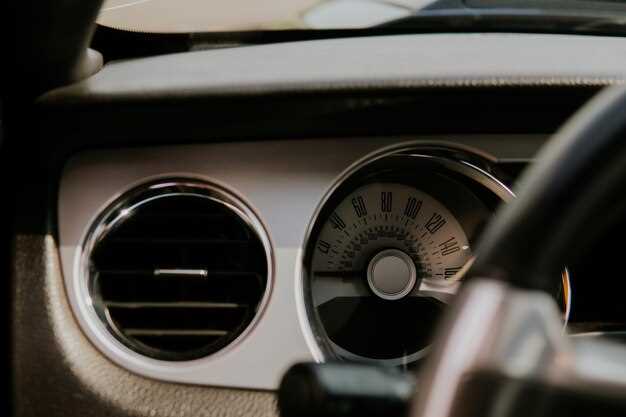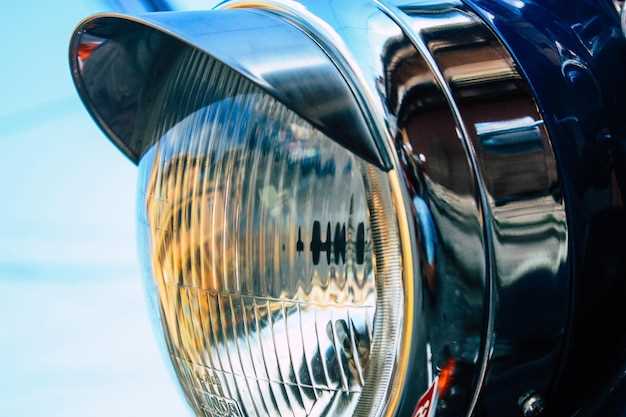
Classic Japanese cars, cherished for their unique design and engineering, often face a common challenge: overheating. Issues related to cooling systems are not only prevalent but can lead to significant engine damage if not addressed promptly. Understanding how to effectively manage these problems is crucial for both enthusiasts and casual owners alike.
At the heart of the cooling system is the radiator, which plays a vital role in dissipating heat generated by the engine. In classic models, aging components and outdated technology can hinder optimal performance. Regular maintenance, including checking coolant levels and ensuring the radiator is free of debris, should be prioritized to prevent overheating. Furthermore, selecting the right coolant can enhance the cooling efficiency of your vehicle.
Additionally, it’s essential to recognize the signs of overheating. A sudden rise in temperature gauges, steam from the engine bay, or unusual noises can indicate potential overheating issues. Addressing these symptoms early can save both time and money in the long run. Upgrading to more efficient cooling solutions, such as performance radiators or fans, can also enhance the longevity of classic Japanese cars, keeping them on the road for years to come.
Identifying Common Causes of Overheating in Classic Japanese Models

Overheating is a prevalent issue faced by owners of classic Japanese cars, often leading to severe engine damage if not addressed promptly. Understanding the underlying causes is essential for effective maintenance. Below are some common factors that contribute to overheating in these vintage vehicles.
Cooling System Failures: The most frequent culprit behind overheating is a malfunctioning cooling system. This can include a variety of problems such as old or degraded coolant, which loses its effectiveness over time. Regularly checking and replacing the coolant can prevent overheating. Additionally, a failing radiator, whether due to corrosion or blockages, can impede the flow of coolant and reduce cooling efficiency.
Thermostat Issues: The thermostat regulates the flow of coolant through the engine. If it becomes stuck in the closed position, it prevents coolant from circulating, leading to rapid temperature increases. Regular inspections of the thermostat can help identify and rectify this issue before it escalates.
Water Pump Malfunction: The water pump plays a critical role in the cooling system by circulating coolant throughout the engine. A worn-out or damaged water pump can lead to inadequate coolant flow, resulting in overheating. Checking for leaks or unusual noises from the pump can be key indicators of its condition.
Blocked Hoses: Over time, the hoses that carry coolant can become blocked or kinked, disrupting proper coolant flow. Inspecting these hoses for any signs of wear, damage, or debris is vital for maintaining optimal cooling performance.
Engine Blockages: Deposits and sludge can build up inside the engine block and cooling passages, restricting coolant flow. Regular flushing of the cooling system can help eliminate these blockages and support efficient temperature regulation.
Excessive Engine Load: Classic Japanese cars may not be equipped to handle modern demands, and excessive loads can lead to overheating. Monitoring driving conditions and avoiding heavy loads can alleviate stress on the engine and cooling system.
By being aware of these common causes of overheating, owners of classic Japanese cars can take proactive measures to ensure their vehicles remain in optimal condition. Regular maintenance, careful observation, and timely repairs are essential for the longevity of these cherished models.
Upgrading Cooling Systems for Enhanced Performance
When dealing with overheating issues in classic Japanese cars, upgrading the cooling system is essential for improved performance and longevity. The stock cooling systems in many classic models may not adequately handle the demands of modern driving conditions, especially in warmer climates or during spirited driving. An effective upgrade can help maintain optimal engine temperatures and prevent overheating.
One of the first steps in enhancing the cooling system is to replace the radiator with a high-performance unit. Aftermarket radiators often feature larger cores and improved materials, which facilitate better heat dissipation. Additionally, consider installing an aluminum radiator, as it tends to provide superior thermal efficiency over traditional copper units.
Another critical component is the cooling fan. Upgrading to a more powerful electric fan can greatly enhance airflow, particularly in stop-and-go traffic. Electric fans provide on-demand cooling, allowing for precise temperature control, and can be set to activate at lower temperatures to prevent overheating.
Thermostats also play a crucial role in maintaining engine temperatures. Installing a high-performance thermostat with a lower opening temperature can help regulate coolant flow more effectively, ensuring the engine operates within its optimal temperature range. Coupled with a high-flow water pump, this setup can significantly improve coolant circulation, combating overheating.
It is important to consider the choice of coolant as well. Using a high-quality coolant that provides better heat transfer and higher boiling points than standard mixtures can offer additional protection against overheating. Always follow the manufacturer’s recommendations regarding the coolant mixture to ensure maximum efficiency.
Lastly, regular maintenance of the cooling system is vital. Flushing the system periodically and checking for leaks or worn hoses can prevent issues that lead to overheating. Keeping the system in optimal condition ensures that upgrades perform effectively and maximize the efficiency of the vehicle.
Routine Maintenance Tips to Prevent Overheating

Preventing overheating in classic Japanese cars requires consistent and thorough maintenance. Here are some essential tips to ensure your vehicle runs smoothly:
1. Regular Cooling System Checks: Periodically inspect the cooling system, including the radiator, hoses, and water pump. Look for any signs of leaks, wear, or damage that could lead to overheating. Ensure that the coolant is at the appropriate level and condition.
2. Coolant Replacement: Replace the coolant as recommended in your owner’s manual. Old or degraded coolant can lose its effectiveness and may contribute to overheating. Use the type of coolant specified for your vehicle.
3. Thermostat Inspection: The thermostat regulates the engine temperature. Test it regularly to ensure it opens and closes properly. A malfunctioning thermostat can lead to overheating issues by not allowing the coolant to circulate effectively.
4. Radiator Maintenance: Clean the radiator fins and ensure they are free of debris. A blocked radiator can obstruct airflow and hamper cooling performance. Additionally, consider flushing the radiator to remove any built-up deposits.
5. Fan and Belt Condition: Check the condition of the cooling fan and its belt. A faulty fan or a worn belt can diminish cooling efficiency, resulting in overheating. Replace any components that show signs of wear or failure.
6. Engine Oil Quality: Maintaining the correct oil level and using high-quality oil can help in heat dissipation. Regularly change the engine oil as it provides lubrication and helps keep engine temperatures in check.
7. Monitor Temperature Gauge: Pay attention to the engine temperature gauge while driving. If it shows higher than normal readings, take appropriate action immediately. Allowing the engine to run hot can cause severe damage and lead to overheating situations.
By following these routine maintenance tips, you can significantly reduce the risk of overheating in your classic Japanese car, ensuring optimal performance and longevity. Regular attention to these areas not only prevents overheating but also promotes overall vehicle health.




